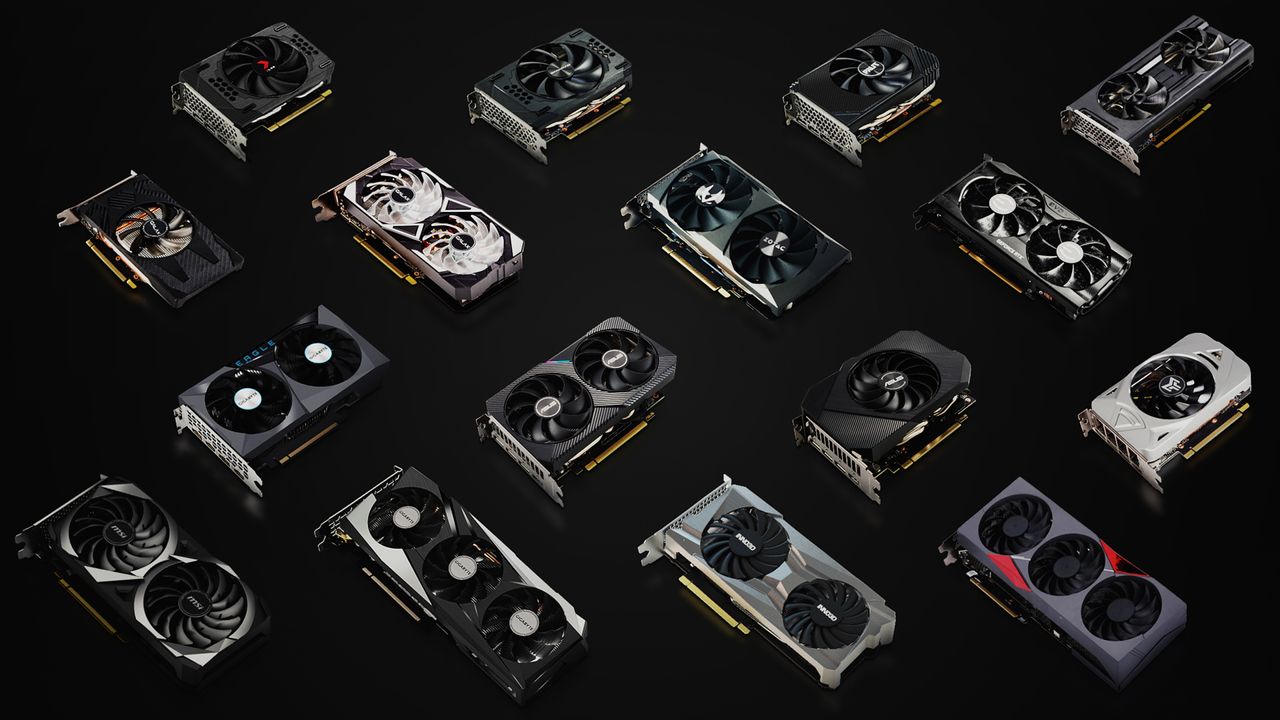
Nvidia’s midrange GPUs have long been a sweet spot for gamers seeking solid performance without breaking the bank, so it's high time we revisit them. ComputerBase.de’s recent testing of the RTX 2070, 3070, 4070, and 5070 across 1080p and 4K resolutions provides valuable insights into how each generation has evolved—not just in raw performance, but in efficiency, thermal behavior, and the impact of architectural advancements. You might not be expecting any surprises in this roundup, and this might be lengthier than the average news piece, so let's take a look.
Compared at 1080p
At 1080p, the generational improvements are usually the least evident because the games are more CPU-bound. Still, the scaling is clear when you look across a wider spread of titles. In Cyberpunk 2077 with ray tracing on medium and DLSS Balanced, the RTX 2070 averages 12.9 FPS, the 3070 nearly doubles that at 23.8 FPS, the 4070 reaches 48.2 FPS, and the 5070 peaks at 61.3 FPS. That kind of progression carries into other ray-traced workloads: Oblivion Remastered climbs from 24.9 FPS on the 2070 to 63.3 FPS on the 5070, while Quake 2 RTX rises from 52.6 FPS to 166.5 FPS over the same generational span.
In more forgiving rasterized titles like Diablo II: Resurrected and Overwatch 2, which start out comfortably above 100 FPS on the 2070, the latest cards push into the 300–380 FPS range at 1080p — far beyond the limits of most monitors, though the manufacturers are always pushing for more. The takeaway is that while not every title stresses modern GPUs equally at lower resolutions, the newer architectures consistently scale better in demanding scenarios, especially where ray tracing is involved.
4k is a different story
The 4K benchmarks reveal a different story because this is where the GPUs really stretch their legs and the performance hierarchy comes into sharper focus. In Cyberpunk 2077 at ultra settings with ray tracing and FSR Balanced, the 4070 delivers 27.8 FPS, while the 5070 manages 32.0 FPS — a modest uplift, but still a generational gain. Ratchet & Clank: Rift Apart tells a similar tale, with the 4070 at 92.6 FPS and the 5070 at 119.2 FPS, more than doubling the 2070’s 19.2 FPS baseline. Horizon: Forbidden West also benefits heavily, where performance climbs from 31.6 FPS on the 2070 to 91.1 FPS on the 5070, showing how newer GPUs increasingly make 4K playable even in modern open-world titles.
The esports angle scales as well: Overwatch 2 runs at 99.3 FPS on the 2070 but hits 275.2 FPS on the 5070, proving that high-refresh 4K competitive gaming is no longer out of reach. The generational contrast is sharpest here, not only because raw throughput matters more at 4K, but also because features like DLSS—which just got updated to a much faster Transformer model—gain greater leverage.
Metric |
RTX 2070 |
RTX 3070 |
RTX 4070 |
RTX 5070 |
|---|---|---|---|---|
Raster (Avg FPS) |
36 |
61 |
85 |
107 |
Ray Tracing (Avg FPS) |
25 |
48 |
55 |
63 |
Average Power (W) |
171 |
218 |
188 |
231 |
Efficiency (FPS/W, Raster) |
0.21 |
0.28 |
0.45 |
0.46 |
Efficiency (FPS/W, Ray Tracing) |
0.15 |
0.22 |
0.29 |
0.27 |
Power and efficiency further tilt the scales because, despite being slower in absolute terms, the 4070 consistently runs with 20–25% lower power draw than the 5070, leading to 15–25% stronger performance-per-watt in titles like Cyberpunk 2077, Horizon, and Doom Eternal. In some cases, like Doom Eternal with ray tracing, the 4070 more than doubles the 2070’s performance while consuming almost the same wattage, signifying the architectural leaps. The RTX 4070 and 5070 are pretty much neck-in-neck efficiency-wise with both trading blows, but the 4070 often leads.
This small advantage actually positions it the most balanced upgrade in the lineup, particularly for players who care about thermals and acoustics as much as raw frame rates. Owners of the 2070 will find transformative gains by moving to either the 4070 or 5070, while 3070 users benefit most from the 4070’s efficiency and DLSS enhancements. But for 4070 owners, the leap to a 5070 often feels underwhelming — the higher power and thermal cost buys modest raw FPS improvements, but comes with an efficiency penalty that undermines the real-world value.
RTX 4070 is a standout
In conclusion, ComputerBase.de’s testing confirms many anticipated trends while offering insights that make the bigger picture clear, in hindsight. As expected, the 4070 stands out as the best balance of performance, efficiency, and thermal management, while the 5070 provides peak throughput for most scenarios but with diminishing practical returns. Of course, if money is no object then there's no reason not to pick the 5070, and the 3070 also offers significant improvements over its Turing-based predecessor.
Moreover, this testing shows us how the mid-range segment today rewards intelligent architecture, efficient memory handling, and AI-assisted frame generation over brute-force scaling. This is why the RTX 5070 fares unimpressively against the RTX 4070, which exemplifies this principle in practice. Make sure to check out ComputerBase.de's coverage yourself, as they have some great, interactive charts over there that'll offer you an even more granular understanding of the differences.
Follow Tom's Hardware on Google News to get our up-to-date news, analysis, and reviews in your feeds. Make sure to click the Follow button.







